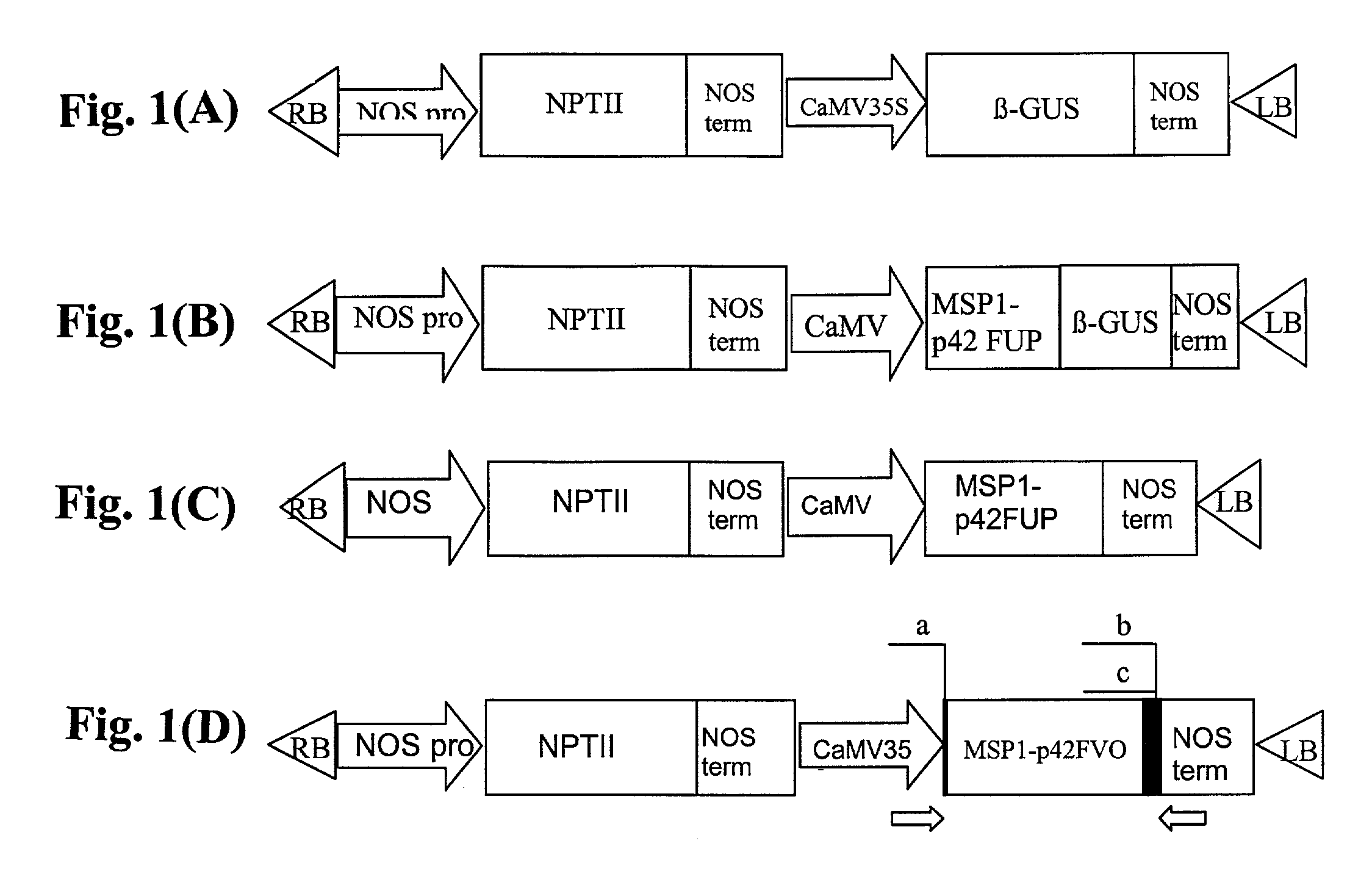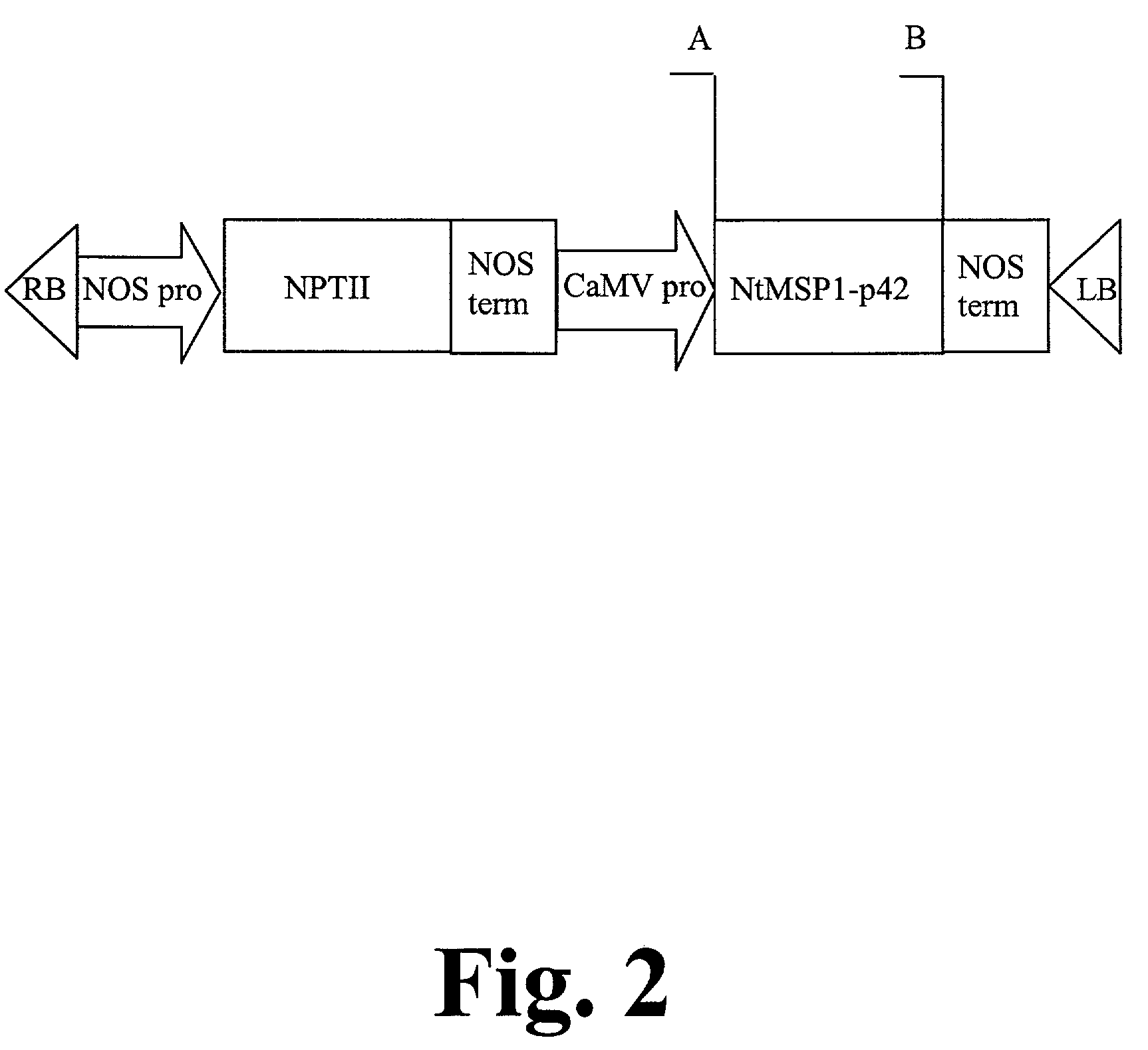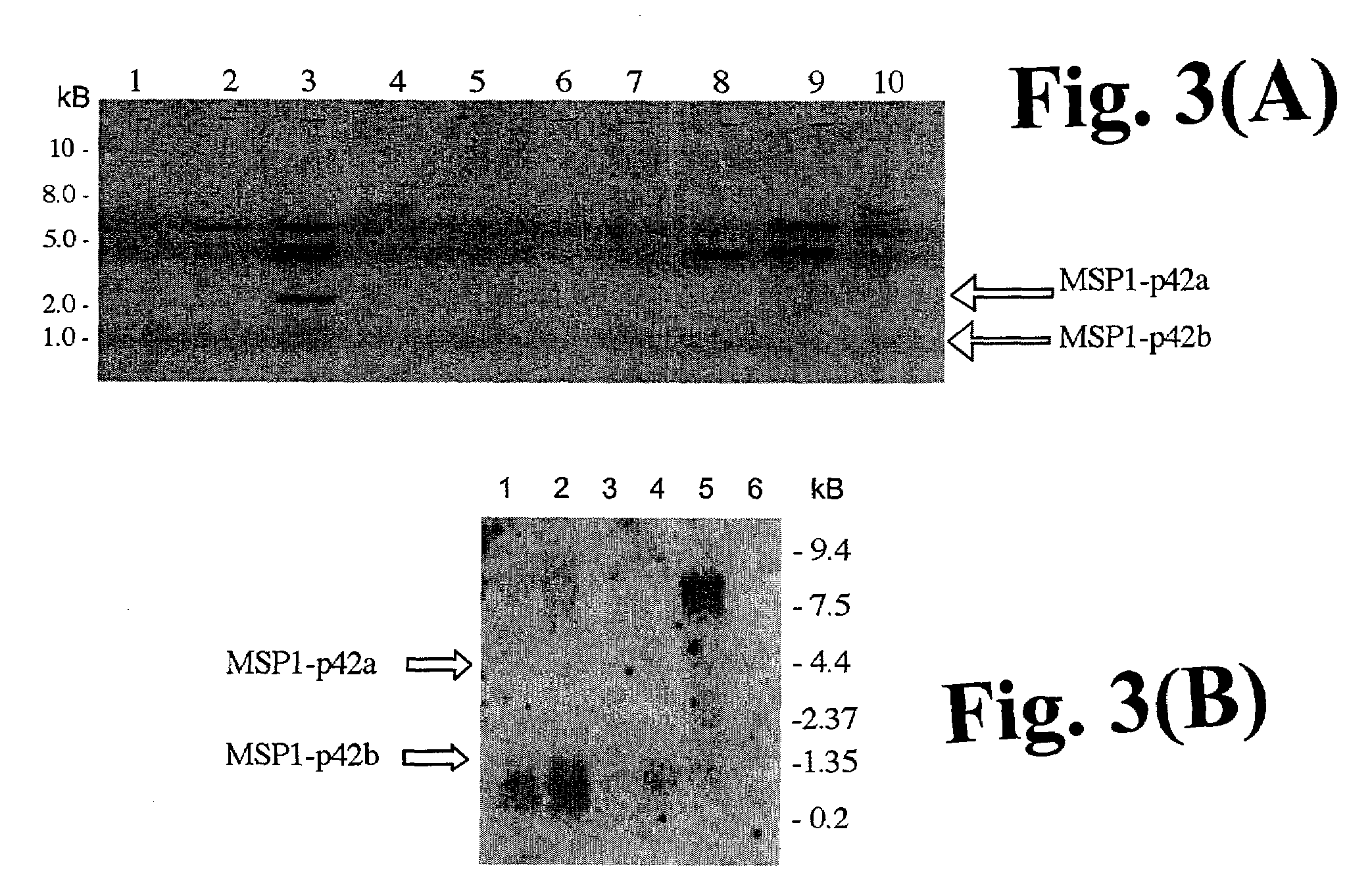Plasmodium falciparum merozoite surface protein-1 malaria produced in transgenic plants
a merozoite surface protein and plant technology, applied in the field of recombinant plasmodium falciparum polypeptides, can solve the problems of inability to achieve partial protection of the major human malaria pathogen, inability to develop commercially viable vaccines, and inability to achieve the above-described methods cost prohibitive commercial feasibility, etc., to achieve enhanced rna transcription and stability, and increase the translation of the mrna transcribed
- Summary
- Abstract
- Description
- Claims
- Application Information
AI Technical Summary
Benefits of technology
Problems solved by technology
Method used
Image
Examples
example 1
MSP1.42 FUP Construct
Materials and Methods
Construction of Plant Expression Vectors
[0116]The recombinant MSP1.42 FUP construct and antigens are based on the C-terminal 42 kD sequence of the P. falciparum Uganda-Palo Alto isolate (FUP) corresponding to the MAD20 allele. MSP1.42 expression constructs were generated by ligation of the FUP MSP1.42 gene into the expression vector pBI121 (Clontech) (FIGS. 1A–D) or modifications of this vector. The pUC18 plasmids which contained the FUP gene was constructed previously from P. falciparum genomic DNA. (Chang et al. 1992. Journal of Immunology 149:548; Nishimura et al. 1999. Tropical Medicine and Medical Microbiology, University of Hawaii at Manoa: Honolulu). MSP1.42 FUP was excised by BamH1 and Sac1 from pUC18 and ligated into BamH1-Sac1 sites within the multiple cloning site of pBI121(FIG. 1A), which contains the GUS gene (MSP1.42a, FIG. 1B), or of pBI121, which lacks GUS (pBI121 without b-GUS) (MSP1.42b, FIG. 1C). The MSP1.42 FUP plant expr...
example 2
MSP1.42 FVO Construct
Materials and Methods
Construction of Plant Expression Vectors
[0130]The MSP1.42 FVO construct and antigens are derived from the C-terminal 42 kD sequence of a Thailand isolate (FVO) corresponding to the K1 allele (Tanabe et al. 1987. J Mol Biol 195:273). MSP1.42 expression constructs were generated by ligation of the FVO MSP1.42 gene into the expression vector pBI121 (Clontech) (FIG. 1) or modifications of this vector. The pUC18 plasmids which contained the FVO MSP1.42 gene were constructed previously from P. falciparum genomic DNA. (Chang et al. 1992. Journal of Immunology 149:548; Nishimura et al. 1999. Tropical Medicine and Medical Microbiology, University of Hawaii at Manoa: Honolulu). MSP1.42 FVO was excised from pUC18 using BamH1 and Kpn1 and amplified by PCR using Pfx polymerase (Life Technologies). Oligonucleotides were used to modify the 5′ end of the MSP1.42 FVO sequence and to create two different 3′ regions (FIG. 1D). The 5′ oligonucleotide (5′ CGGGAT...
example 3
NtMSP1.42 Construct
Materials and Methods
Construction of Plant Expression Vectors
[0142]The modified MSP1.42 FUP (NtMSP1.42) gene had been re-engineered previously to reflect insect cell codon usage for baculovirus expression studies and inserted into pUC18. See co-pending U.S. patent application Ser. No. 09 / 500,376, herein incorporated by reference. This modified MSP 1.42 sequence was used as a template for high fidelity PCR to create the NtMSP1.42-pBG constructs (FIG. 2). NtMSP1.42 expression constructs were created by insertion into either pBI121 without b-GUS or pBINmGFP5-ER without mGFP5-ER (Haseloff et al. 1997. Proc Natl Acad Sci USA 94:2122) (e.g., modified to delete the gfp gene). Two versions, a secretion construct (NtMSP1.42S) and a cytoplasmic construct (NtMSP1.42C), were created which differed in their 5′ regions but maintained the same 3′ region (FIG. 2). The 5′ region of the NtMSP1.42 sequence (A) was altered by removing the flg5 yeast secretion signal while maintaining...
PUM
| Property | Measurement | Unit |
|---|---|---|
| Tm | aaaaa | aaaaa |
| temperature | aaaaa | aaaaa |
| temperature | aaaaa | aaaaa |
Abstract
Description
Claims
Application Information
 Login to View More
Login to View More - R&D
- Intellectual Property
- Life Sciences
- Materials
- Tech Scout
- Unparalleled Data Quality
- Higher Quality Content
- 60% Fewer Hallucinations
Browse by: Latest US Patents, China's latest patents, Technical Efficacy Thesaurus, Application Domain, Technology Topic, Popular Technical Reports.
© 2025 PatSnap. All rights reserved.Legal|Privacy policy|Modern Slavery Act Transparency Statement|Sitemap|About US| Contact US: help@patsnap.com



